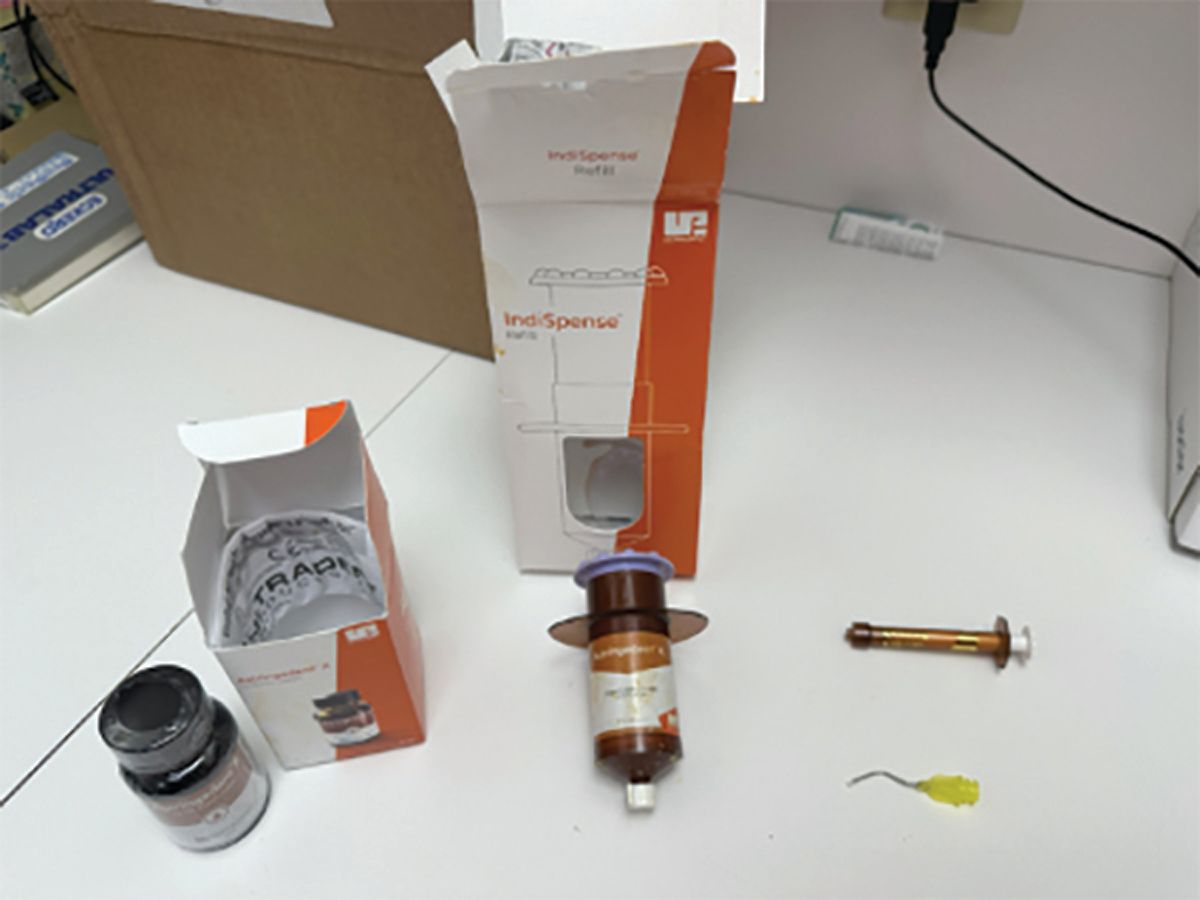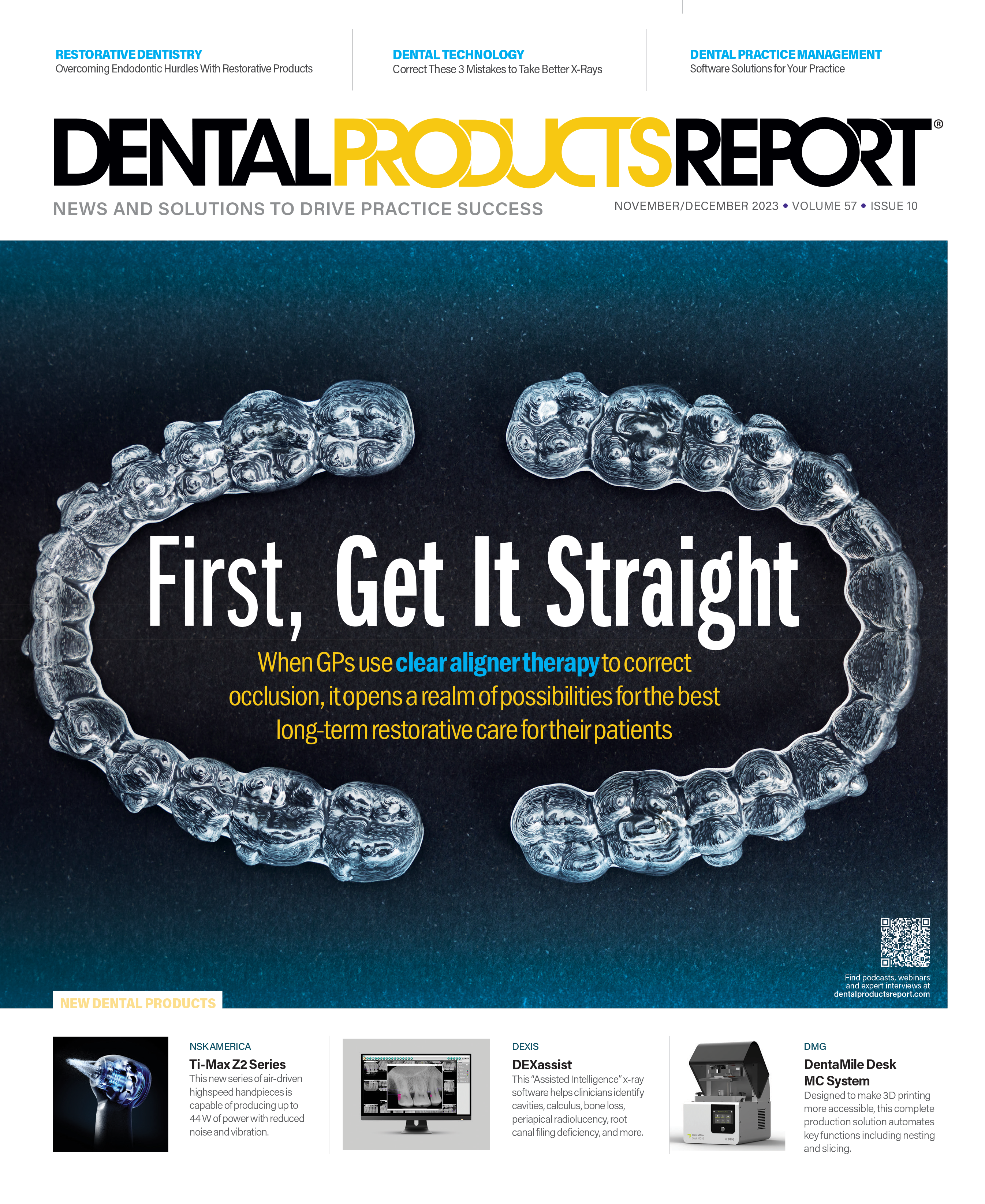Keeping Blood Under Control in Restorative Procedures
Catapult evaluators tested Ultradent’s Astringedent X’s ability to put control back in the clinician’s hands during restorative treatments.
Keeping Blood Under Control in Restorative Procedures. Image credit: © Ultradent

Dentistry, in a controlled environment, is not so bad. Take a clinician with minimal experience and confidence, and in the absence of aggressive tongues, large cheeks, and overactive salivary glands, the dentist’s clinical results most likely will be positive and predictable.
Life, sadly, does not always present us with such ideal and controlled environments. Although the examples above are difficult enough, the biggest challenge is dealing with blood. It’s believed that 47.2% of adults in the United States have some form of gum disease. Therefore, blood is quite common in our workspaces.
The inflammation associated with this incredibly common disease leads to challenges with visibility, contamination, and marginal isolation. It ruins our restorations, carries bloodborne pathogens, destroys our impressions and scans, and can easily transform our work day in the operatory into one full of stress, frustration, and unpredictability. Simply put, blood is the bad guy.
Fortunately, there are several solutions that, when added to a restorative dentist’s armamentarium, can control blood in the working field. These include but are not limited to:
- Lasers: highly effective; destructive and expensive up front
- Retraction cord: difficult, time-consuming, cost-effective
- Gingival retraction paste: not always effective; time-consuming, expensive
- Coagulative hemostatic agents: variably effective; convenient, cost-effective
Most dentists would agree that a combination of the above strategies may be needed due to the diverse clinical scenarios we encounter. Situations often arise involving high levels of uncontrollable bleeding, which require potentially all of the above. On the other hand, a clinician may encounter a small amount of bleeding which requires the quickest, most cost-effective, and convenient option.
Ultradent, a highly respected materials and equipment company, is known for its broad and diverse catalog. It has long been relied upon for high-level tissue management with products such as ViscoStat hemostatic and Ultrapak retraction cord. One of their most effective, but lesser utilized hemostatic agents is Astringedent X.
Astringedent X is a 12.7% iron solution, which Ultradent says is its most powerful hemostatic agent. It is designed for even the most difficult cases of uncontrolled bleeding, along with typical everyday cases. Ultradent says it provides rapid and profound hemostasis.
Catapult Education, a bureau of dental educators and clinical leaders, was asked to test this hemostatic option in their day-to-day clinical domains. Astringedent X was sent to 16 dentists, the majority of whom perform mostly restorative procedures. All of the participating dentists use the hemostatic options listed above to maintain control over bleeding. They used the product with crown preps and class II, III, and V restorations. They used it with deep margins and in the presence of periodontal inflammation. Some used the product in preparation for final impressions and scans, both in the anterior and posterior.
The Catapult evaluators noted a few features of Astringedent X that stood out. First, it is dispensed via Ultradent’s Dento-Infusor tip, which has a unique array of brush tips. This was very well-received by Catapult evaluators; 94% found application using the tip was helpful. They found it less wasteful and more convenient to use than a cotton pellet or microbrush.
The majority of evaluating dentists had the opportunity to use Astringedent X in areas where there was significant bleeding. These would be areas in which most clinicians would have to revert to less convenient, more time-consuming, or more costly methods to achieve desired hemostasis. For example, the bleeding would normally be so excessive that they would have to use a diode laser. To really put this product to the test, the evaluators used Astringedent X in the most difficult areas of hemostasis. An impressive 81% of these clinicians noted that it was just as or more effective at controlling bleeding. Remarks included, “It was very fast acting and controlled bleeding quite well” and “Hemostasis was immediate! The product was excellent.” One evaluator even commented that this was the “best product available for controlling excessive bleeding.”
Although Astringedent X earned glowing feedback from its evaluators in terms of effectiveness, there were negative comments, primarily concerned with viscosity. Astringedent X possesses less viscosity than typical hemostatic agents such as ViscoStat. As a result, more of the product is expressed with the same amount of finger strength on the syringe. Almost all of the evaluators experienced this and realized that a learning curve must be met before being able to avoid overexpression of the product.
I had the opportunity to use Astringedent X in my office. I also conferred with another Catapult clinical evaluator, Ankur Gupta, DDS, who has a general dentistry practice near Cleveland, Ohio. Both of us put Astringedent X to the test by using it in a heavily bloody situation, and we were very impressed with how it performed. My assistant had remarked on several occasions that “this stuff is magical.” Dr Gupta shared that he had never used or heard of Astringedent X prior to the product review, but after having a chance to evaluate it, he told me that he now uses it almost every day. We agreed that it was runnier than expected, but that didn’t really bother either of us after getting the hang of it.
To receive the Catapult vote of confidence, a product must attain a higher than 90% overall satisfaction in effectiveness. Astringedent X clearly met such criteria. For this author, it is rare for a product to go from unheard of to being used every day. This is one such product. Congratulations to Ultradent for successfully providing another tool to make our lives as clinicians easier, less stressful, and more enjoyable.
